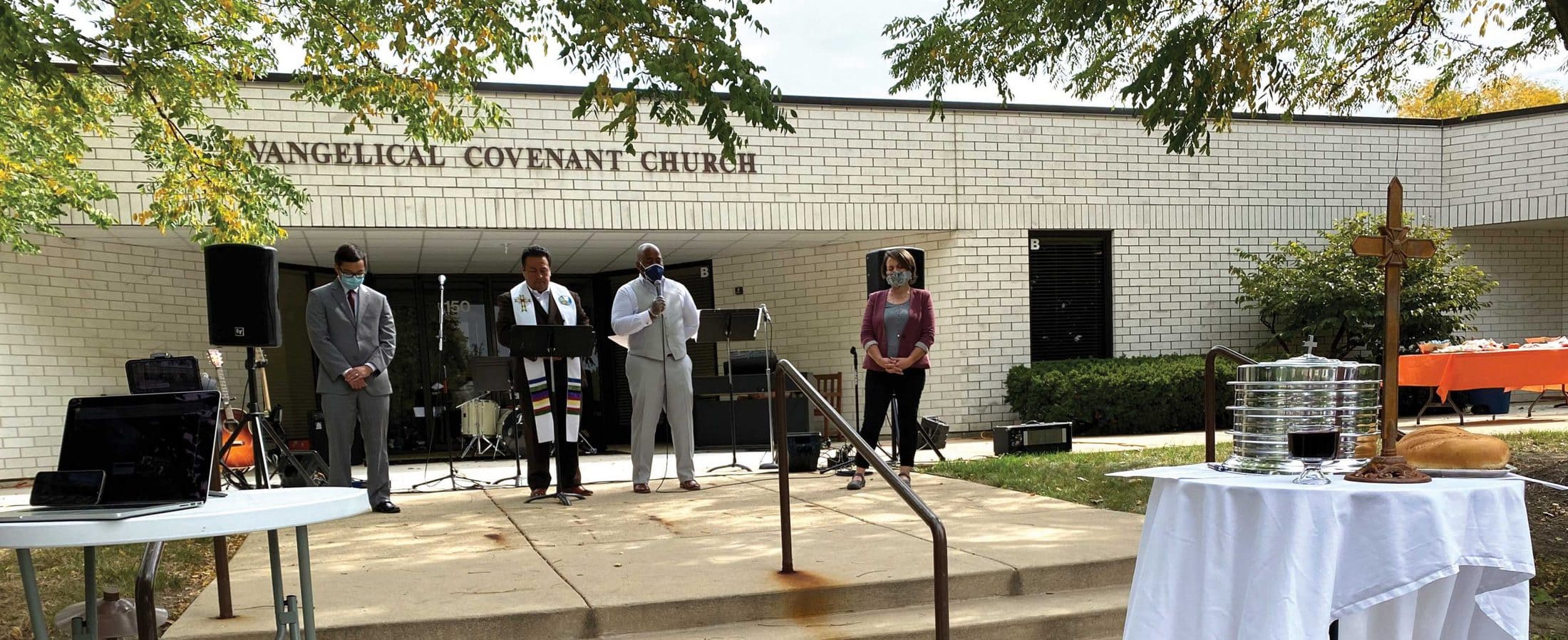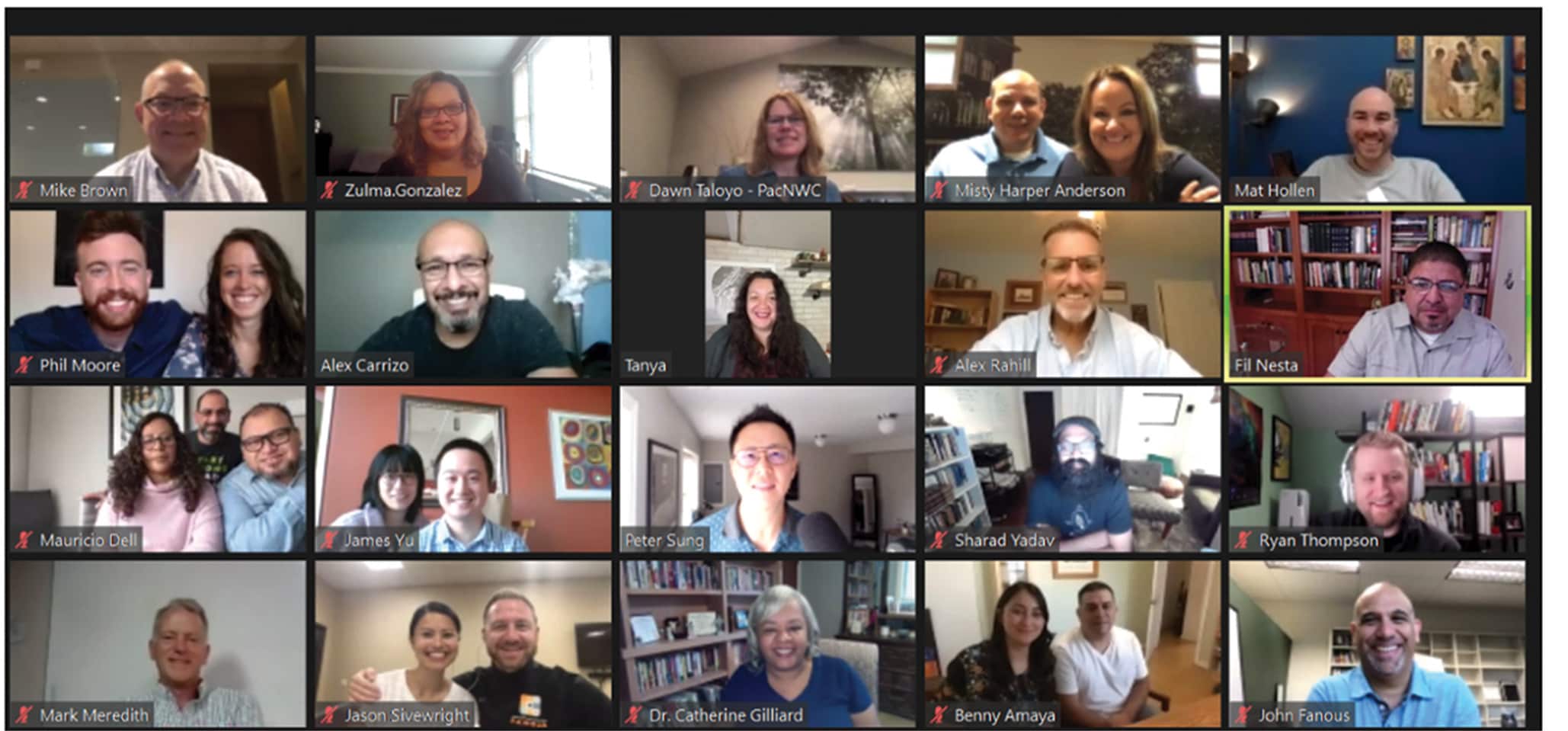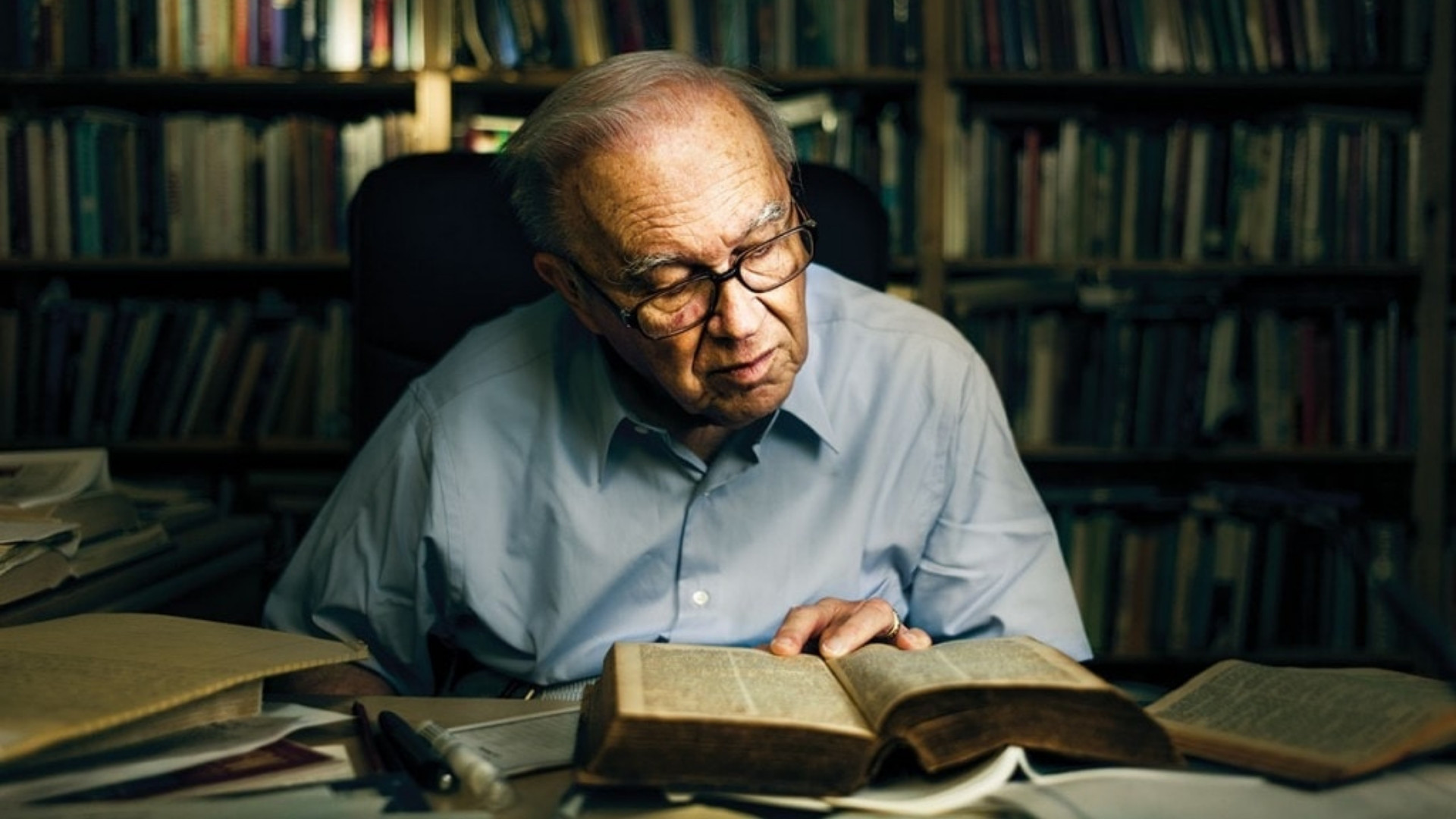The New Reality for Ministry
As Covid-19 continues to hinder any return to worshiping “as usual,” Covenant congregations across North America are adapting to a new season of ministry. And Start & Strengthen Churches is pivoting as well. The Companion sat down virtually with three denominational leaders to talk about how the mission priority is shifting its vision to move forward and the hope they see for the church.
What unique challenges have you seen churches encounter in the midst of Covid-19?
MARY: Nearly every church has had to go digital. Pastors have had to learn a whole new set of tools. Pastoral care through Zoom is terrifically difficult—not being able to personally support families who suffer with illness or death, trying to figure out a digital way to provide pastoral care when we’re used to being able to touch one another.
And a lot of churches are in trouble with finances, especially rural churches who are not technologically savvy, who don’t have a “donate now” button or Paypal set up on their website. How do you do an offering in that setting?
ALEX: Much of our ministry is building-centric, and when you lose the building, you don’t know what to do. Covid-19 has caught all organizations off-guard. What most people are realizing—and this happens to every organization—is that mission drift has occurred. The methods end up being elevated above the mission, and when the methods break, we don’t know how to fix it because we forgot the mission.
The reality is that every church has to become “bilingual”—they need a discipleship pathway that’s both digital and in-person, like two lanes on a road. Every church has to build the capacity to move between those lanes. It’s really challenging.
Add to that, most churches are seeing a significant decrease in participation, even digitally, in any form of discipleship. Compound health challenges with sheltering-in-place, economic challenges, people losing their jobs, and the racial injustice challenges—it’s a very difficult time for the church and for pastors.
Yet this is a prime opportunity for us to be the church, and many leaders are longing for that.
PAUL: Some churches are thriving in this season. What we’re seeing is a thinning of the middle. I’m reluctant to draw parallels to the business world, but in retail they’ve gone to either boutiques or big box stores—that middle size has thinned out. That’s what we’re seeing in churches. As difficult as it’s been, many smaller and rural churches have stayed the same. It’s those churches between 150 and 250, up to 800, who are struggling more. Most of the churches who are larger than that are actually growing or stable, but the middle space has been hard. We’re a relational movement—and for most of our pastors, their giftedness is relational. The struggle is not to just wait it out but to adapt to this season.
ALEX: The Barna Group is predicting that one in five churches will close in the next 18 months. Will the Evangelical Covenant Church be in the middle of that?
PAUL: There are some national statistics about pastors who will leave ministry as well. It’s just been too hard, and it’s not what they signed up for. The skill set they had worked, and now the legs have been knocked out from underneath their call.
MARY: Part of that too is where you get your feedback and encouragement. Usually that comes from seeing people’s faces. Now I preach to a computer camera. That’s not nearly as fulfilling.
In the Evangelical Covenant Church, we have consistently identified church planting as the primary means by which people come to know Jesus. We have talked about planting 500 churches in the next 10 years—is that still our goal?
ALEX: Let me clarify that this is not about an Evangelical Covenant Church goal; it’s about a biblical mandate. We have to go back to why we plant churches. It’s not because we decided this is a cool thing to do.
Jesus gave four commissions in Scripture, all about sending us out: 1) “Go and make disciples of all nations.” 2) “As the Father sent me, so I will send you.” 3) “Go and preach the gospel until people come to faith and repentance.” 4) “When the Holy Spirit comes upon you, you’re going to be my witness.” In response to those commissions of Jesus, the disciples preached the gospel, made disciples, and new churches started. Jesus said this is how he was going to build his church and the gates of hell would not prevail against it in Matthew 16:18. This is how they understood what Jesus meant, and this is how they lived it out.
People can get caught up in the “what”—what are we doing? We have to go back to the “why.” Are we following Jesus or not? Are we on his mission or not? If we are, we have to say we’re about preaching the gospel, we’re about making disciples, and when new communities gather together, the church is born. These new communities are now the incarnational body of Christ in a community. We’re committed to church planting, and we want to plant as many healthy missional churches as we can—that’s never changed.
That 500 number came out of this understanding that culturally the church is declining. Most movements that are not growing by a certain percentage are actually in decline and they don’t even realize they’re declining. There are whole denominations that will not be with us 20 years from now—even 10 years from now. Organizations provide stability; apostles provide catalytic activity. Church planting is an apostolic activity—it’s one of the gifts God gives for the church.
The number of churches we plant is less important than our being committed to it. Church planting is the research arm of the larger church. This is where all the new understandings come from, regarding what is ahead in terms of culture. It’s the growth engine of the church. We’re not interested in growth for growth’s sake—we plant churches because we love God and we want to see people reconciled to God.
The Holy Spirit continues to call church planters, the Holy Spirit continues to draw people to himself, and the Holy Spirit continues to start new churches. There’s an ebb and a flow. This year we might actually plant as many churches as we planted last year, which is kind of hard to believe—in some interesting new contexts.
PAUL: We planted 19 churches last year. In this season where the Covenant has found itself in the front lines of conversations around biblical justice as best we can, the interest of people of color in planting with us has gone up because they see us as the kind of movement they want to be a part of. That, combined with the classic Covenant virtue of thoughtfulness, means people who are coming from outside the Covenant continue to come in through these classic Covenant doors, desiring to plant with us. And there are always church planters who rise up from within the Evangelical Covenant Church.
Sometimes we hear some anxiety about church planters who join us from outside the Covenant, with the sense that the Evangelical Covenant Church is being overcome by non-Evangelical Covenant Church people. The myth is that people come to us because we have money to plant churches and they’re looking for an easy ride. But church planting is terribly hard work. In truth, they come because they value Covenant values.
We have not formally set a new goal around church planting, but we have stepped away from the 500 number in the interim. We’ll continue to pursue planting while recognizing the context we’re in. Resources have changed at the conference level in terms of funding and staff. We respect the context and the current climate, even as we see energy growing about planting.

What innovations are you seeing in church planters right now?
ALEX: One church planter in Los Angeles had 65-70 people in his launch team, and they went public in January. Then Covid-19 happened, and he immediately pivoted to online. He had some digital skills, and suddenly there was a new opportunity. They were initially focusing on who was in their immediate 15- to 20-mile radius. All of a sudden, it’s like, “Oh, we could reach everybody who might be interested in our church.” He’s Filipino, so all these connections went out to Filipino communities across the world. In the Philippines, 400 people were participating in this church online. Now they want to start a daughter church in the Philippines.
This isn’t just about broadcasting. That’s where the opportunities can get lost—we think, “Oh, we can just broadcast our message,” which is great. But how can we engage with people? Churches are doing very innovative things with discipleship online. A discipleship group can now draw people throughout a whole region to meet online. The building-centric model would say, “We do our discipleship in Sunday school, and since we don’t have the building, we can’t do discipleship.” It’s easy to get into some ruts in methods that were fruitful previously but now are broken.
Churches have seen new people coming to faith, new ways of discipleship, and new ways of engaging in compassion, mercy, and justice—both digitally and in person. One church worked with their city to coordinate an online site for local needs, and they took groceries to seniors who couldn’t venture out. Let’s face it: As the world is more in need, the church has more opportunity to respond.
PAUL: The vast majority of our pastors planted bricks and mortar churches and added an online component as necessary. Now we’re realizing that digital is the new front porch of the church. As Alex is saying, we’ll need to be bilingual moving forward. Just as Amazon started online and then added bricks and mortar stores—that’s what we’re talking about.
MARY: During Covid-19, I was encouraged to start a blog. Former church members, other Covenanters, and colleagues are reading it—not just my current congregation. This idea of ministering in multiple contexts without having turf wars—that’s just shared ministry—is pretty cool. I’m am moving to Florida, where I’ll pastor a church with both snowbirds and year-round people. If we meet digitally, the snowbirds can participate all year long.
How do you see our church planting model changing?
ALEX: We have a strong legacy of church planting, and we stand on the shoulders of great leaders who were clear and strong and ready to take risks. That’s a defining element of the Covenant. But we’ve moved from a more prescriptive church planting model to a more principle-based model.
For example, every healthy church plant does evangelism. So you talk about the biblical understanding of evangelism, and we teach about some key elements of evangelism. But then we get down to the incarnational level and we say, how do we do this in our context? Similarly, we would say every good church does discipleship. So we say, here’s the biblical principle, and here’s some training elements around how healthy churches do discipleship—now how will you do discipleship in your context? We’re basing it on key principles of healthy church over and above any kind of prescriptive methodology.
PAUL: This is a huge shift in Start & Strengthen Churches. The old story is that we used to say, “Here’s what you must do.” Plug and play. That doesn’t fit anymore. And we’re not doing that anymore.
ALEX: All of our training will be online from here on. Anyone who is a church planter can access the best of our training at any time. We can now have the best possible faculty, and contextual teaching will be part of that video library.
The other thing we’re doing is to migrate our training from five days, which was like drinking from a fire hose, to a two-day intensive. Then we’ll create contextual cohorts that meet every two weeks, with a leader who is in that context. They’ll be working on their church plant together as a group in those early stages of church planting.
When we have asked church planters for feedback, we heard that they often felt isolated. They often didn’t have community, and they didn’t feel cared for. This new model addresses a number of those issues. These cohorts will provide community, care, and coaching for our planters in those early phases.

What has been the Covenant’s approach to congregational vitality in the past decade?
MARY: Before he served as director of congregational vitality, John Wenrich was involved with the Town and Country Commission. Out of working with rural and small-town churches came the idea that vitality resources should be provided for every church—not just town and country congregations. So John and his team developed the ten healthy missional markers and the vitality pathway. At first, the pathway consisted of one workshop. Eventually it expanded to three workshops and the congregational assessment, the behavioral covenant at the beginning, and the service of consecration at the end.
The national vitality team was put together with staff at the conference level who facilitated the workshops. The materials came from the Evangelical Covenant Church, and facilitators made adaptations at the conference level.
Those workshops were the only opportunities vitality offered until North Park Theological Seminary began offering a congregational vitality certificate five years ago.
What was successful in that approach? What challenges have churches encountered as they seek to become healthy and missional?
MARY: The success was that churches who completed the pathway gained a huge toolbox for revitalization and refreshing their ministries.
The challenges we heard from churches were that pathway was too long—it could take up to two years, or even longer if they dragged their heels. So it was hard to keep any momentum going. We also heard that it needed to be more action-oriented rather than so information-driven. And the materials needed to be contextualized.
We see a lot that needs to be changed. Churches sometimes had negative reactions to the first workshop, Veritas, which focuses on truth-telling. Sometimes they didn’t like the truth, or sometimes it seemed to hit more on the pastor than anybody else.
So they didn’t give the rest of the pathway a chance.
How is vitality changing going forward?
MARY: We’re calling it a pivot. The downsizing of conference staffs has led to not having a vitality specialist in every conference. So how do we do ministry going forward? We’ve created a pivot team, and we’re not calling it congregational vitality anymore—it’s missional vitality.
The team is comprised of people from churches representing most of our conferences who have a passion for vitality and represent the multiethnic mosaic. The team is following a model developed by Carey Nieuwhof called “the 30-day pivot.” We’re assessing our materials and very quickly deciding whether it’s worth the energy to continue with each resource.
Pulse, which is the tool designed to measure whether or not a church is healthy and missional, is currently being completely refreshed. It’s exciting to see the openness of the pivot team and to hear the fresh voices. Tying back to the origins of vitality, two members of our vitality team are on the Town and Country Commission, so we’re retaining that connection. And John Wenrich has been enthusiastically supportive of this new vision.
We’re going down two tracks—we’re working on the “new normal” resources to be unveiled down the road, and we’re also working on answering the question, What do pastors need right now?
It’s a time of creativity and innovation. We have to be agile and flexible. Healthy churches need leadership that is able to pivot. They have to be able to let go, and help their church let go of what was. One of the beauties right now is that it’s not possible to do it the way it’s always been done because we’re not in the building. People are more open to change because it’s like being a church plant.
ALEX: This is the difficult opportunity. Every church has the opportunity to reinvent itself—an opportunity to restart or relaunch in a healthier, more missional way. I think there will be a wave of churches who say, “Yeah, the mission got buried in all of our activity, and we forgot we were on a disciple-making mission. We’ve been able to focus and get clear.”

How has Covid-19 affected our understanding of what makes a healthy church?
ALEX: In the U.S., sometimes we have planted worship services, not churches. We have to get back to planting churches. Churches whose main mission is making disciples—I don’t think they were as affected by Covid-19. Healthy churches are on mission, they’re clear about what that mission is, and that mission is agnostic to methodology. If I’m on a disciple-making mission, I don’t need a building.
MARY: I would add that the ten missional markers were really wonderful for a while. But they’re static. You could meet nine of them without ever evangelizing. That was a flaw. Now the church has to be adaptive, and it has to continue to be adaptive in the future. You must have creativity in your midst in order to adapt, but that wasn’t in the ten missional markers. You have to be contextual. And you have to be aware of reaching the mosaic—not just those who are like us, but those who are beyond us.
ALEX: Historically when people think about church planting, they tend to think about planting in white suburbs. We want to honor our history, but the multiethnic mosaic is a growing edge through church planting. When you see the beautiful diversity of context and ethnicity of our coming church planters, you’re just going to say wow.
PAUL: Sixty percent of our church plants in the past year have been people of color, and 40 percent are female-led, with some overlap between those two groups. It really is remarkable how we’re living into those core values of the Covenant. We have people of diversity leading both our church planting team and the vitality team, very much reflecting who the Covenant is. We’re working very hard in Start & Strengthen Churches to reflect that reality.
How else do you anticipate Start & Strengthen Churches adapting to a post-Covid reality?
PAUL: The adaptations we’re making aren’t just for the current reality—this is setting us up for the future. Structurally there’s a very real possibility that we’ll lose a certain percentage of churches—nationally the Barna Group (who is famous for their negativity!) says we could lose 20 percent. A lot of the work of closing churches lands with Start & Strengthen Churches, such as the finances, insurance, etc. We’re hoping for the best—we’re praying for the best. But we’re also gearing up for the reality that over the next 18–24 months, we might have a wave of church closures. So we’re staffing up for that, we’re creating systems, we have a checklist regarding what to consider if you’re going to close.
We also recognize that there will be more mergers. If a church is considering a merger, we are hoping that before they get too far down that road they would reach out to Start & Strengthen Churches or their conference for resources and questions to consider. Sometimes a merger is best for the health of the church, sometimes it’s a last-ditch effort, and sometimes that goes awry. Many people are familiar with our vitality work and with church planting, but they’re not aware of our resources around the end of the life cycle of a church. There’s a way to do that well, and it’s not just about money. It’s not just about emotions. Spiritually, how do we end well?

What encouragement would you offer to churches today?
ALEX: Jesus is still building his church. The gates of hell will not prevail against it—and certainly Covid-19 won’t. I believe this is a time of suffering and sacrifice for leaders—it’s a refiner’s fire. I don’t know if that’s encouraging! But I believe the Lord is calling his church to look more like him.
MARY: There’s a quote I’ve lived by my entire ordained career: When nothing is certain, anything is possible. That definitely is Covid-19.
PAUL: God is at work. God continues to call people to follow him. God continues the work of Jesus to redeem all of creation. God’s work has not stopped—it’s unabated!
We are part of a bigger picture, a bigger story. We have a particular part of the kingdom to which the Covenant has been called to tend. But we have to hold it with open hands. We might lose a certain percentage of churches, and they represent actual people with pastors who might lose their jobs. I’ve closed a number of ministries, and that’s hard work. When you think your soul is fit to burst, it stretches you further. That’s something for all of us as leaders and pastors—our soul is being stretched. Sometimes that stretching feels like it’s causing damage, but the truth is, the Lord is engaging the soul of our church and the soul of our leaders—but it’s not without pain.
The mission is unchanged, but our methods are being severely challenged. I would also say that the church belongs to the Lord. We can get anxious wondering, what’s going to happen to the Covenant? What’s going to happen to my congregation? The long and short of it is, over the last 2,000 years, we have seen the church universal continue to grow as local congregations come and go. The church overall is the Lord’s responsibility, brought into being by the will of God as expressed through the Holy Spirit on the day of Pentecost. The church will not cease to exist until it is the will of God that it no longer exist, which we understand to be when Jesus comes back and receives us to himself.
Like many churches in this season, Amanda Olson, pastor of Grace Covenant Church in Chicago, pre-records some of her sermons, and small groups watch them together online or in person. Once a month they share “Zoomunion,” and some weeks they gather in small groups as mission friends, “going back to our roots,” she says. Even after coronavirus restrictions are lifted, they do not plan to gather in their space every week to worship.
“At Grace we have been having the hard conversation for a few years, going back to the refrain that the church in our society is no longer deemed relevant. One of my catch phrases has been that we need to do church less and be the church more. I’m guilty of this—I’ve spent so much time doing church. Now at Grace we have developed a four-week rhythm: worship, care and connection, Christian formation, and outreach and engagement. We need all four of these aspects. Our goal is to form the Whole church.”













